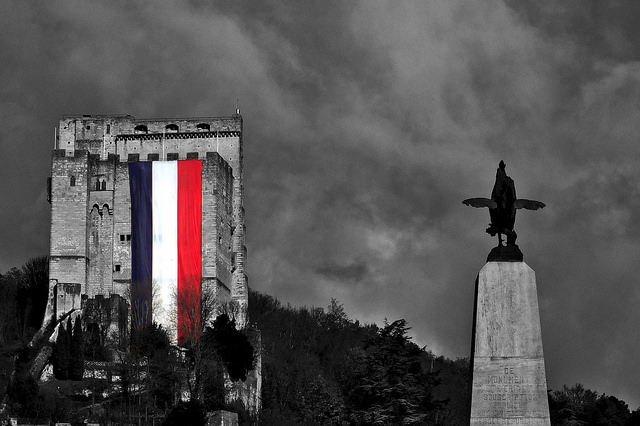
ASPI’s
Counter-terrorism Policy Centre (CTPC) recently launched a new series or reports, the
CT Quick Look. The reports will be brief and easy-to-read, and will follow significant terrorist incidents and counter-terrorist actions. Each will be just a few pages long, highlighting key issues and assessing their relevance for stakeholders and Australia.
In ASPI’s May 2016 election brief,
Agenda for Change 2016: Strategic Choices for the next government, and a range of op-eds, we’ve argued the need for timely lessons learned in the counter-terrorism environment. The past two years has seen a dramatic change in the tempo of terrorism and counter-terrorism: 75% of Australia’s post-9/11 terrorist attacks and disrupted plots have occurred in this time.
The international threat environment also reflects this pressure, with countries such as Belgium, France and Turkey reeling from attacks. We need to ensure we understand what happened in these attacks, and other key incidents, and what this might mean for the future. But the turnaround times are tight. Australia needs a
more agile response.
The
CT Quick Look is ASPI CTPC’s contribution to this process. It aims to provide CT policy makers and practitioners with rapid information to learn from and adapt more quickly, and to protect Australians from what
Prime Minister Turnbull described last week in his National Security Statement as ‘the most immediate security challenge that directly affects us all: our military and police; our communities; our youth’.
In developing our understanding of an event and its significance, the CTPC will engage with relevant stakeholders. But, as always, any conclusions and recommendations within the
CT Quick Look are the personal views of the authors.
The first edition of the
CT Quick Look analyses the Bastille Day terrorist attack in Nice on 14 July 2016.
The Nice attack is significant for several reasons. First, it was low-cost and unsophisticated, using a rented truck as the primary weapon. Second, it was carried out on a national day of celebration against a large gathering in a public space, with the aim to kill or injure as many people as possible. Finally, the driver bypassed municipal police barriers and the lightly armed officers lacked the necessary firepower to prevent or quickly halt the attack. French national police eventually shot dead the driver, after he had driven the truck a further 2km, ultimately killing 86 people and injuring more than 300.
It was no surprise when the so-called Islamic State (Daesh) claimed responsibility for the attack on its Bayan Radio news bulletin. Whether Daesh orchestrated the attack, or perhaps ‘inspired’ it, the terrorist group will claim it as its own to enhance its image and further the strategic narrative of its strength. While Daesh is being militarily defeated in Iraq and Syria, attacks outside the combat zone—particularly in peaceful and secure countries of the West—allow it to retain some strategic initiative.
What should Australian authorities take away from the Nice attack?
The simplicity and effectiveness of the attack indicates the capacity of terrorists to adapt their methods to available ‘soft’ targets and to use a range of tactics and weapons depending on the environment and availability. Australian governments and businesses already recognise the increased risk of terrorist attacks on national days of celebration, such as Australia Day and ANZAC Day, and at large public gatherings, such as high-profile sporting events. This was demonstrated by the effective disruptions of Daesh-inspired terrorist plots focussed on the
past two ANZAC days. Sevdet Besim was this week
sentenced to 10 years imprisonment for his role in the 2015 plot.
As was the case in France, our high-readiness counter-terrorism units won’t be the first responders in a Nice-style attack. So it’s important for emergency services in towns and rural centres to assess their capabilities to respond to a range of terrorist threats. But regardless of training and equipment, they can’t be expected to be ready for everything all the time.
Protecting our population against terrorist attacks like Nice requires a multifaceted approach:
- information sharing and public awareness campaigns to promote prevention initiatives to counter violent extremism
- ensuring our first responder capabilities—police, fire and ambulance—are well equipped and rehearsed to respond to a range of terrorist threats, including low-level and unconventional attacks
- testing command, control and communication capabilities at all levels
Nice was a tragic reminder of the challenges we face from an unprecedented terror threat. Appropriately, Australia’s terror alert level remains ‘
PROBABLE: a terror attack is likely’. Our intelligence and security agencies are doing a good job, but they’re stretched. A holistic review of national counter-terrorism arrangements, with particular focus on security requirements for large public gatherings and the role of various agencies within domestic counter terrorism, would help mitigate a large-scale attack on Australian soil in the future, and to improve the effectiveness of responses should attacks occur.
 Print This Post
Print This Post